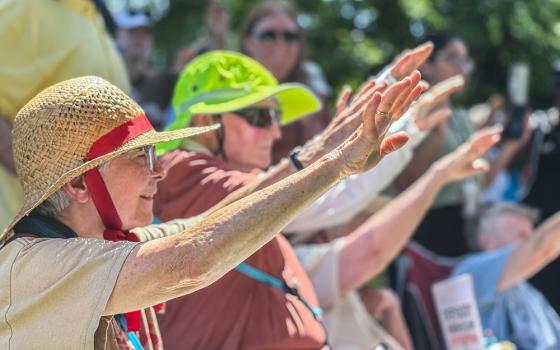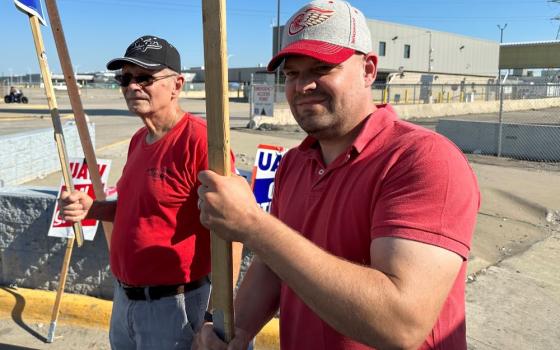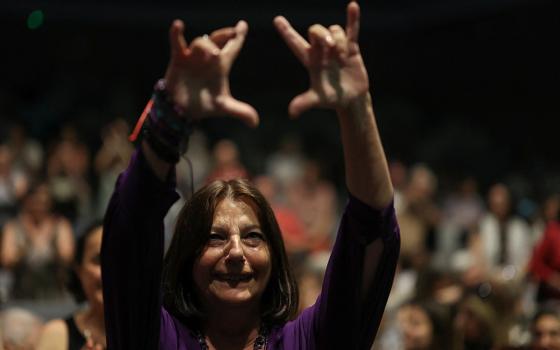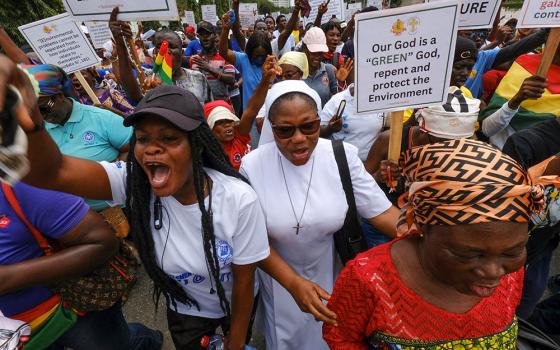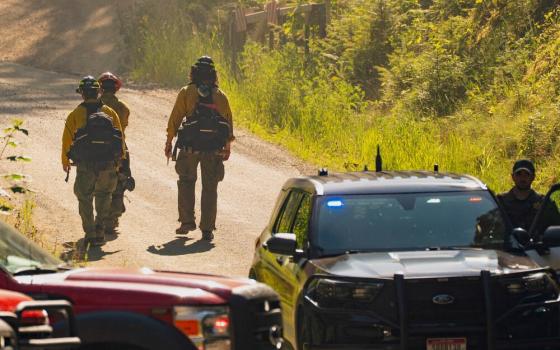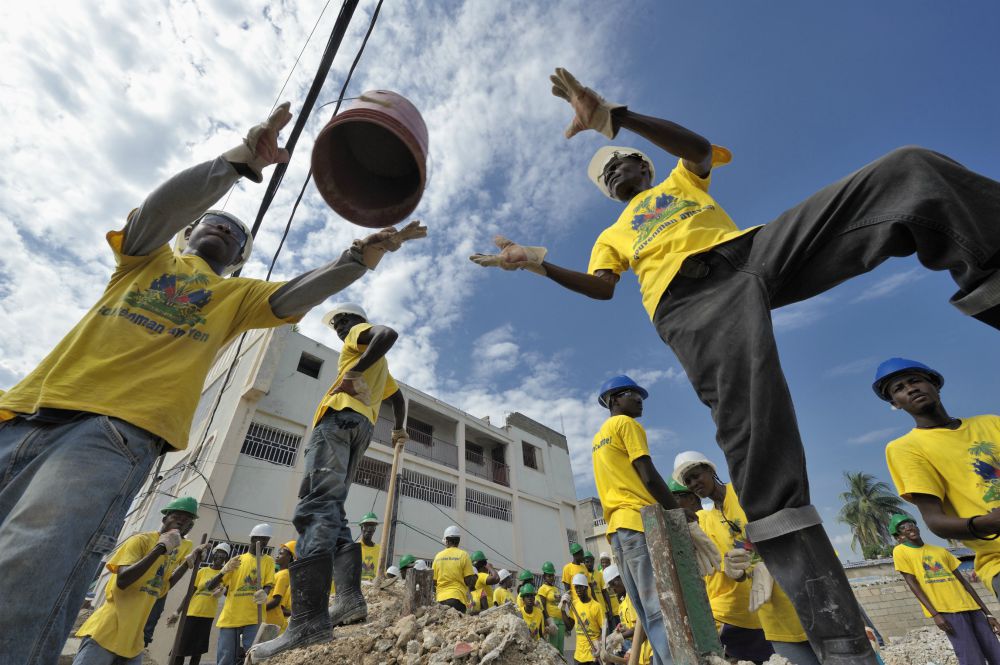
Haitians clean up rubble in a cash-for-work program in Port-au-Prince, Haiti, on Oct. 18, 2010. (CNS/Paul Jeffrey)
Sunday, Jan. 12, marks the 10th anniversary of the 2010 earthquake that devastated large parts of Haiti, including the capital of Port-au-Prince.
The disaster killed an estimated 220,000 people, injured more than 300,000 and left 1.5 million homeless, according to British humanitarian organization Disasters Emergency Committee.
The outpouring of humanitarian assistance was remarkable but also called into question Haiti's long relationship with humanitarian groups. Many Haitians said much of the aid was not effective and did not reach them.
The response reinforced troubling dynamics in a country with a history of colonial and neocolonial dominance, as well as widespread corruption. The concerns over corruption and poor governance have become increasingly public, with Haitians taking to the streets in recent protests and demonstrations against the government of President Jovenel Moïse.
"Populations which have been exploited by colonial or autocratic governments live with decades of simmering anger that can explode into violence without much provocation. It's the 'last straw' phenomenon, and we've seen it in Haiti these past two years," said Sr. Marilyn Lacey, executive director of the humanitarian agency Mercy Beyond Borders and a member of the Religious Sisters of Mercy.
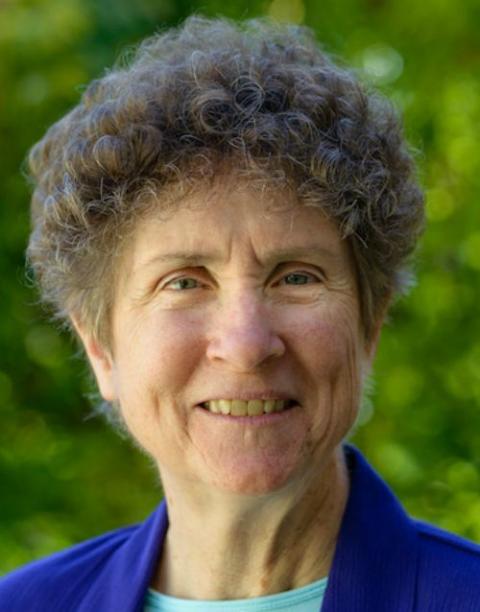
Mercy Sr. Marilyn Lacey (Courtesy of Mercy Beyond Borders)
Lacey said she believes the response to the earthquake was "well-intentioned and good in many, many ways. It saved lives. It restored some infrastructure. It brought hope to a dazed people," she said. "However, it did not bring systemic change or transparency in government or widespread employment opportunities or much economic lift."
In the end, Lacey said, "the Haitian people are resilient, good-hearted, generous. Their spirit was not broken by the 2010 quake, by the [subsequent] cholera epidemics or by the pervasive corruption that holds the country in its grip."
"There is much hope."
To mark this anniversary, GSR asked sisters who have been featured in GSR's coverage of Haiti to reflect on the anniversary and the earthquake's legacy. The sisters responded to the questions either by email or in a phone interview. Their answers have been edited and condensed.
In addition to Lacey, the participants include:
- Sr. Sissy Corr, a Sister of Notre Dame de Namur who works with its Notre Dame Mission Volunteers ministry and helps run an industrial-sized bakery in the city of Les Cayes, which recently reopened after closing during street violence;
- Sr. Judy Dohner, an American Sister of the Humility of Mary who began to work in Haiti in 2002 and experienced the earthquake and its aftermath. She now works among Haitians living in southwest Florida;
- Felician Sr. Marilyn Marie Minter, who works in the southern city of Jacmel and is part of a ministry the Felician Sisters of North America established in 2012 following shorter-term work immediately following the earthquake; and
- Sr. Fidelis Rubbo, a member of the Sisters of St. Francis of Sylvania, Ohio, who worked as a missionary in Haiti from 2001 to 2014.
Advertisement
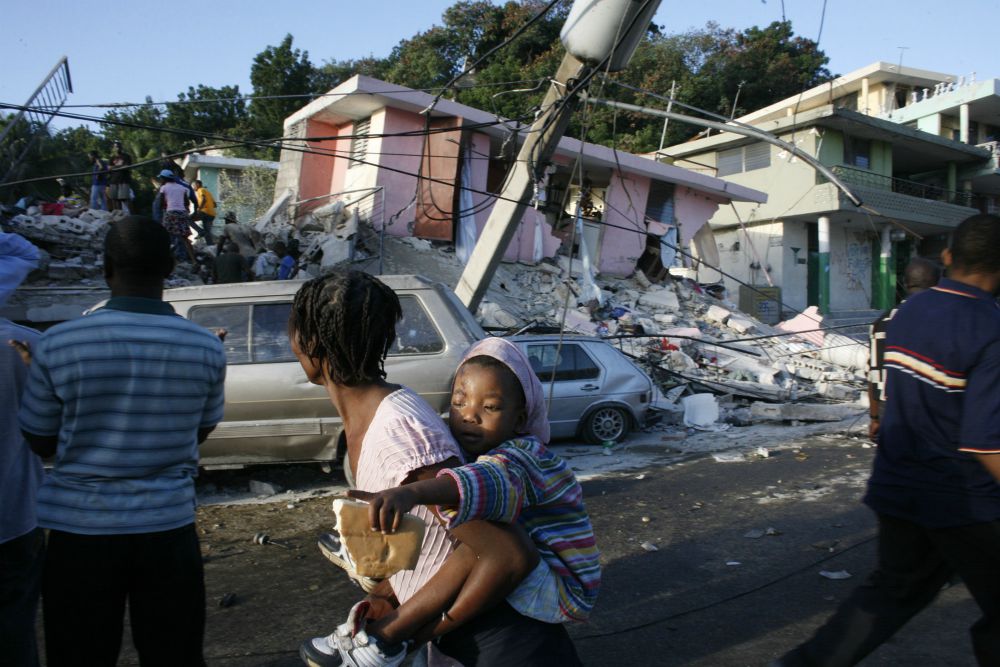
People walk past destroyed buildings in Port-au-Prince, Haiti, on Jan. 13, 2010. (CNS/Reuters/Eduardo Munoz)
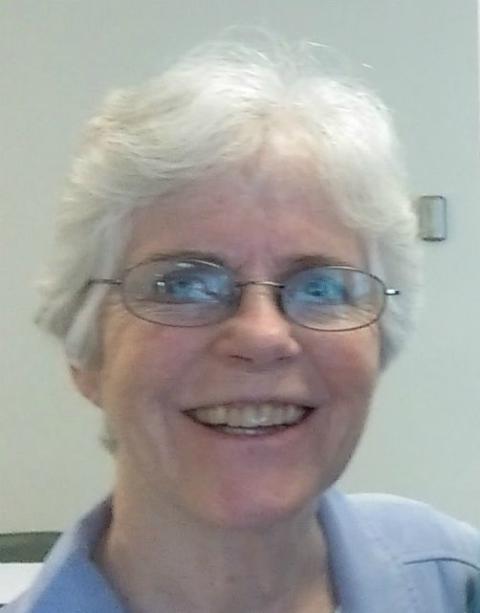
Sr. Sissy Corr, a Sister of Notre Dame de Namur (GSR file photo)
GSR: How do you think the earthquake changed Haiti? A decade later, what effects remain and are still felt?
Corr: When I arrived seven years ago, I saw the ruins and heard the stories. For Haitians, the earthquake is in their bones. It's in their psyche. Certainly, things are much better than they were right after the earthquake. And yet challenges remain. If I were in the government, I'd be dealing with open sewers. It's a huge problem, which contributes to so many health problems. And because it doesn't get addressed, health professionals from other countries come in, which perpetuates the dependence on outsiders. It's a mystery to me that the government doesn't deal with such a basic thing.
Dohner: The 2010 earthquake added to the hopelessness that mires Haiti. The Haitian people became disillusioned as money poured into the country but without any signs of long-term structural change. The earthquake was followed by a cholera epidemic; several hurricanes and the pulling-out of U.N. forces, leaving many without jobs; and civil unrest that continues to this day. Early on, some progress happened: Tourism improved, there was increased access to phones and the internet. But there was very little done at a structural level to diminish the overwhelming poverty in the country.
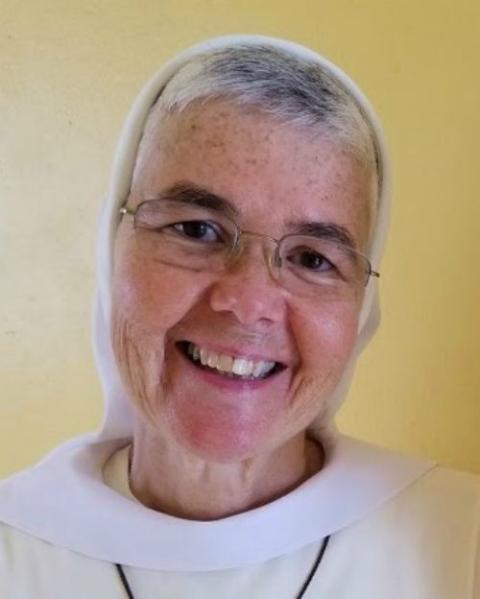
Felician Sr. Marilyn Marie Minter (GSR file photo)
Lacey: In my work around the world, I have seen how populations that are repeatedly beaten down — by circumstances, corruption, natural disasters, cultural marginalization or all of those things — tend to live just for today, without much thought or planning or saving for the future. I see it often in refugee populations, and I see it in Haiti. I see Haitians who don't expect much from this life, so they focus on life after death. Religion becomes central but often is only heaven-focused. This makes development work harder than it needs to be.
Minter: Can I really say that the earthquake permanently changed Haiti? At the time, the world's eyes were opened to Haiti's poverty and devastation. Mine were. Cities were destroyed, places of worship were lost. This brought many NGOs [nongovernmental organizations] and others like our congregation into a relationship with the poorest of the poor. Ten years later, the NGOs have gone. Some of them made things a bit worse because they left behind more of a mess, and others, yes, made a difference to try and rebuild lives. Christian and Catholic organizations came here to rebuild not just buildings, but relationships.
Our congregation responded with accompaniment in the Diocese of Jacmel to be about an evangelization that would walk with and be with and for the poor. These lives have not changed because we are still poor here materially and, at times, spiritually. We try to work with the church through education, faith formation and a mobile clinic. Are kids still hungry? Sure, in some respects. The political situation this past year has not helped at all. In the midst of it all, life has stayed the same and, for some, has gotten worse. But for us, we feel we have been trying our best to continue to grow in our relationships with those we serve.
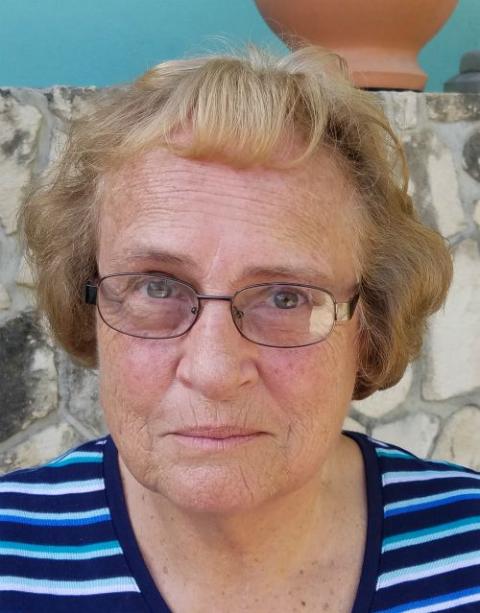
Sr. Judy Dohner of the Sisters of the Humility of Mary (GSR file photo)
How did the event change how humanitarian groups, including the church and sisters, respond to emergencies?
Dohner: Having so many humanitarian groups come to Haiti immediately after the earthquake only added to the chaos. One example: Many organizations that wanted to work with amputees started meeting every two weeks to develop a collaborative process. What really happened was so many organizations were represented that it took almost two hours to complete introductions. Then the participants would complete their tour of duty and leave. We would get new players who had to be brought up to speed. Nothing was accomplished, and collaboration was minimal.
Lacey: The earthquake was a disaster of staggering proportions, but so was the disaster that followed: promises of aid that morphed instead into relief money going to consultants and foreign companies instead of Haitian workers. The Red Cross promising thousands of new houses and delivering only a few dozen. A U.N. contingent that not only brought cholera into Haiti, but also the sad reality of hundreds of children fathered by U.N. troops who then abandoned them.
I have seen the ineffectiveness of "in-and out" aid or the misdirected desire to donate clothing, for example, rather than setting up a factory that could enable Haitians themselves to produce clothing. Haitians need employment; Haiti needs reforestation and economic development.
Was the massive international response to the earthquake a helpful thing or not? Sisters' work is often small in scale. Was that a more appropriate response in 2010 and after?
Dohner: There were no long-term structural changes despite all the funds that poured into the country. Efforts to improve Haiti continue on a small scale through NGOs. But there is no grand plan. Even the poor cathedral in Port-au-Prince still lies in ruins. These efforts are slowing down because of the chaos facing Haiti today. Volunteers and visitors are not coming, and access to most parts of the country are impaired.
Lacey: It is true that sisters often work more locally. However, sisters also work in consortia and know the power of leveraging systems. Through the Catholic Health Association, many congregations of sisters pooled considerable resources from throughout the U.S. — not only millions of dollars but also tremendous health care expertise — to plan and implement the building of a modern hospital in Port-au-Prince. They did so in collaboration with the local Port-au-Prince hierarchy and other Catholic health providers throughout Haiti. That's an example of working to scale.
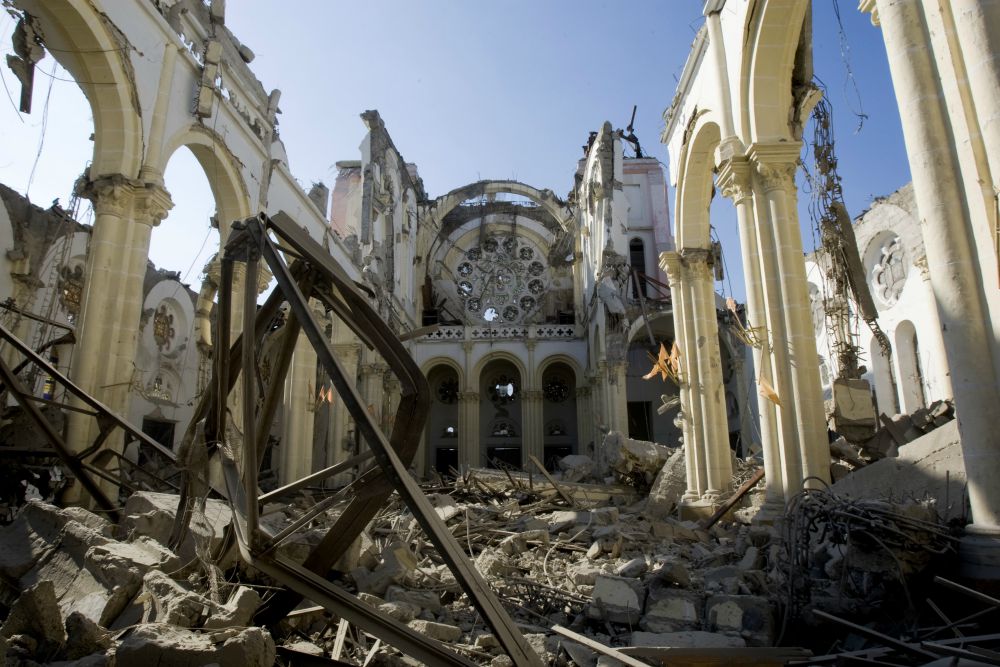
The remains of the Catholic cathedral of Port-au-Prince, Haiti, in a Jan. 15, 2010, handout photo provided by the United Nations. (CNS/United Nations/Marco Dormino)
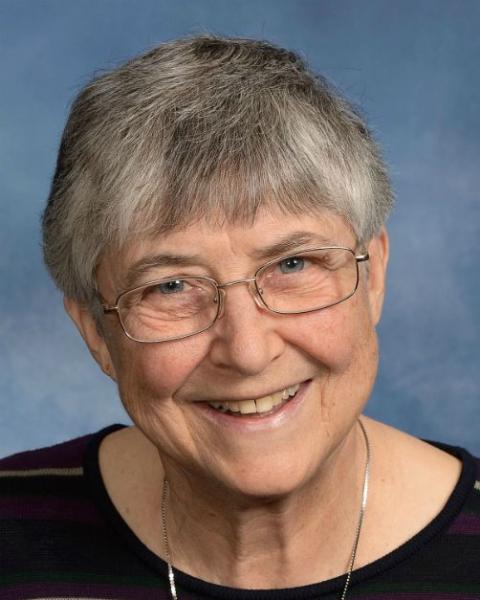
Sr. Fidelis Rubbo, a member of the Sisters of St. Francis of Sylvania, Ohio (Provided photo)
Minter: The immediate response of health care assistance was a blessing, but after time, these organizations moved on, and technicians and medicines did, too. Health care and education have not moved forward. Those are still struggles.
Rubbo: It felt wonderful to witness such an outpouring of generosity from so many. It was unfortunate that the money and the efforts were not more wisely managed. The best examples I saw of things working were when everyday Haitian people were involved with aid agencies in setting things up and making decisions.
But I'm afraid aid agencies didn't seem to know how to manage anything so big. In some cases, they handed the jobs over to other foreign groups who didn't know how to manage things any better than they did. Or they became "self-protection" and only served people who were already in their programs.
A lot of money was wasted and went to pay foreign workers instead of Haitian workers. Probably smaller groups such as the ones religious work with could have done more with the money than was done at the time.
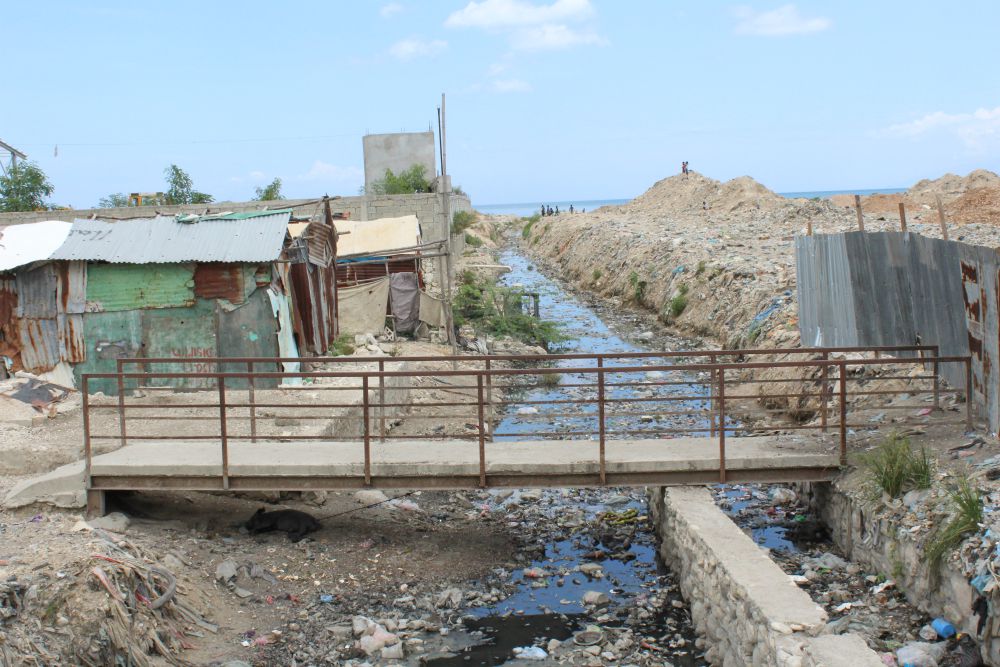
An open sewer in Wharf Jeremile near Port-au-Prince's port area. Sr. Sissy Corr notes that such sewers are "a huge problem," contributing to health problems in Haiti. (GSR photo/Chris Herlinger)
Those who have visited and worked in Haiti feel a great connection to the country and are positive about Haiti despite its reputation as a difficult place. What hope do you find in Haiti right now, 10 years on?
Corr: One of the things Haiti needs is to strengthen its leadership, and that's something we as sisters can help with. We've started doing many things we didn't think we could do at first. I never thought I'd be helping run an industrial-sized bakery. I don't even bake. But it's in our psyche as educators, as collaborators. We can see the potential in others.
We can also see beyond the immediate future. There is so much in Haiti that's about survival: People just have to get through the day for themselves and their families. When you run a bakery, you need a team, working together and thinking together. You need industrial-sized talent. The talent is there. I see it. And we have an eye for bringing out this talent. And it's needed right now.
I hear people say, "Do you think we'll make it?" Or that the situation now feels worse than after the earthquake. The earthquake was awful. But it was the earth moving, and people worked together in the response, helping each other. But now, people are worried. They say there are so many unknowns. An underlying anxiety. One businessman I know who has all of the resources he needs asked me, "How are we going to get through this?" There are worries about protests happening again.
Yet our bakery was up and running in December, our repairs completed. That was very satisfying. Right now, I would say there is good energy. In the people I work with, hope has risen again, and this in the midst of so much ambition among Haitians: to learn English, to learn computer skills. I would say now that there is a lot of hope.
Dohner: Currently, I am working with Haitian immigrants and asylum-seekers in southwest Florida. They are discouraged and see no way out of the quagmire. Some believe the current Haitian president has to step down; others realize that Haiti has struggled without much advancement for most of its history, and things are only worse now. Others believe that returning to a dictatorship is the way to stabilize the country. They love Haiti. They do not want to return. They believe there is no future for them back in Haiti.
Lacey: I am always hopeful. That's a Gospel thing! But you are right: It is not easy work, and it's made increasingly difficult by civic leaders referring to entire nations as "shithole countries" not worth investing in. I have no illusions of grandeur about what we can accomplish. We are planting seeds for long-term change whereby more young women can have education, voice and influence. No country can thrive or be peaceful if half of its human capital is left behind.
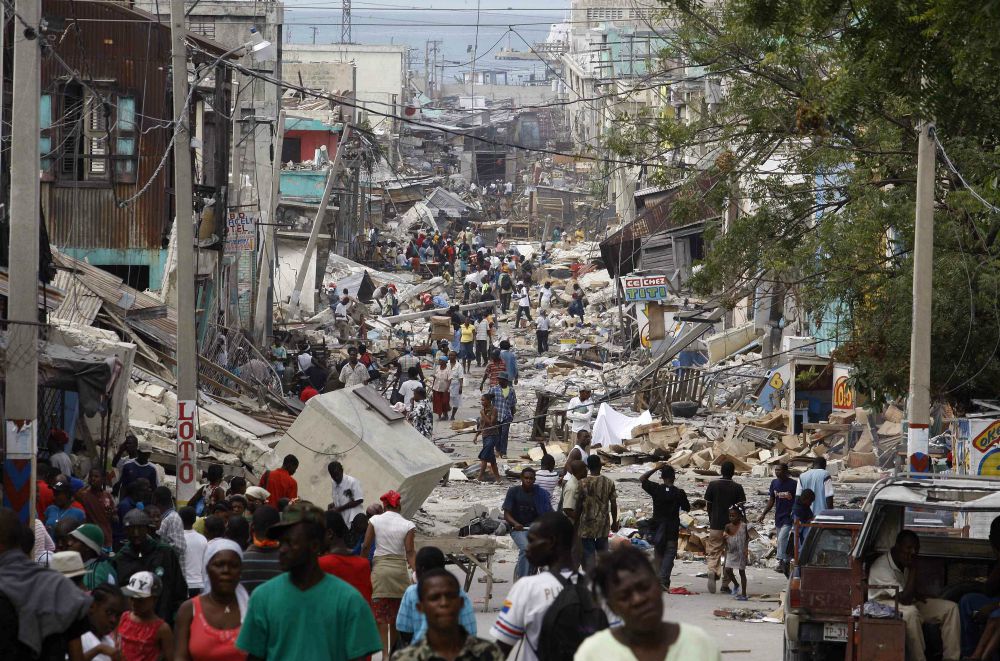
Residents walk in a destroyed area of Port-au-Prince, Haiti, on Jan. 14, 2010, two days following the catastrophic earthquake that struck the Haitian capital. (CNS/Reuters/Jorge Silva)
Minter: The hope I feel in Haiti right now is with the young people. Inviting, empowering and working with them in our mission has been a grace and a challenge. Our focus is to guide them to be leaders and respect what they can change and can't. When you empower someone, they can grow in their leadership and discover their gifts. St. Francis once said to do few things but do them well, take your time, go slowly. How I take this is: Less is more. Work in your faith community. Help them to grow in their faith and trust. Help each to work together to make a difference where we are and how we can be more sustainable working together.
Rubbo: I agree that most people are charmed with the country and its people, and I don't think that has changed. Visitors are afraid to come right now, I think with good cause. It is sometimes harder for Haitians themselves to stay positive because the situation has gotten so dire. But despite it all, they plug along, doing their best for themselves and their children. And they are so terribly grateful for every small thing you can do to help. I think their hope has always come from their indomitable trust in God and their strong sense of family and community.
[Chris Herlinger is GSR international correspondent. His email address is cherlinger@ncronline.org. He is the co-author with Paul Jeffrey, of Rubble Nation: Haiti's Pain, Haiti's Promise (Seabury).]


